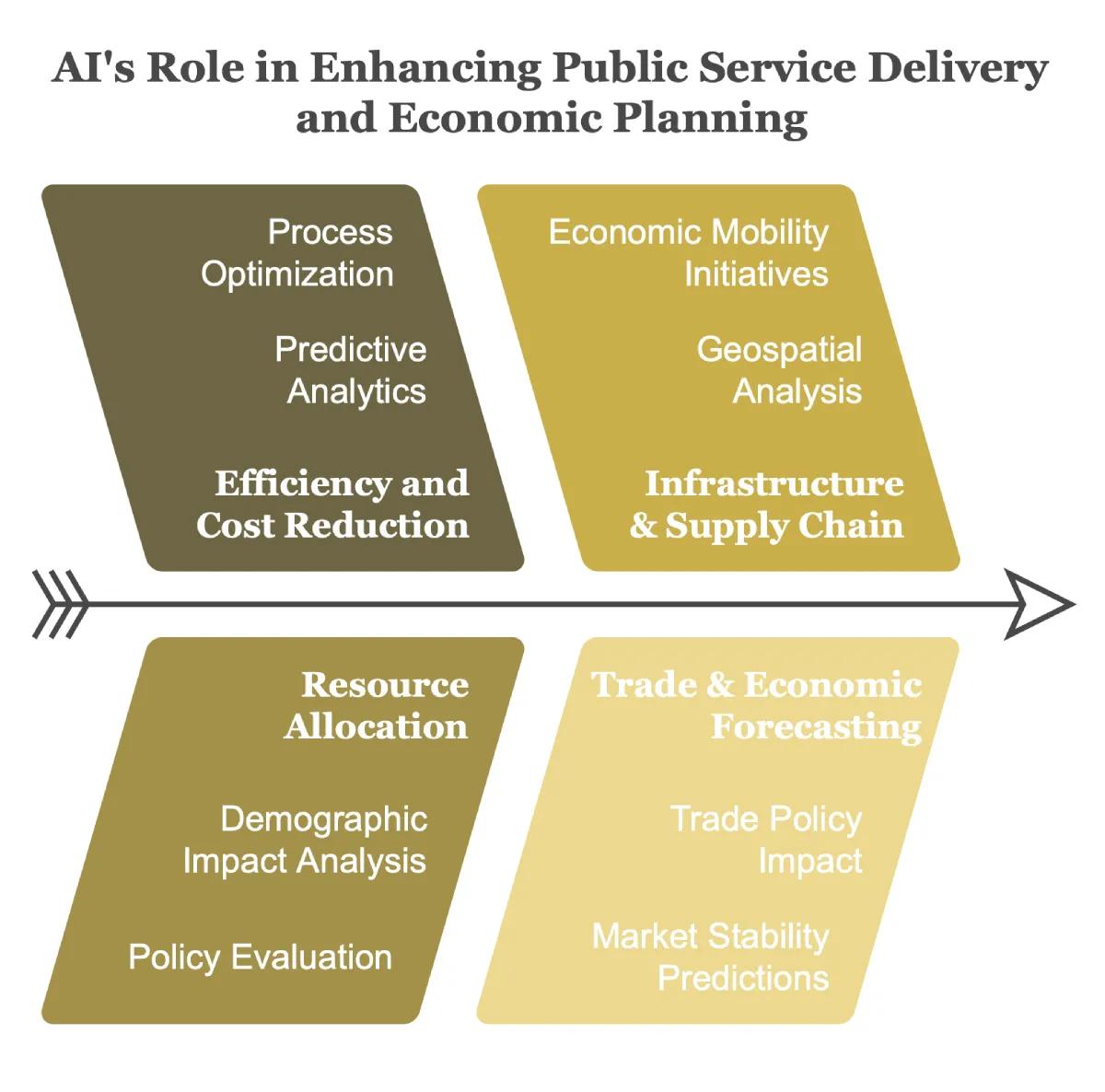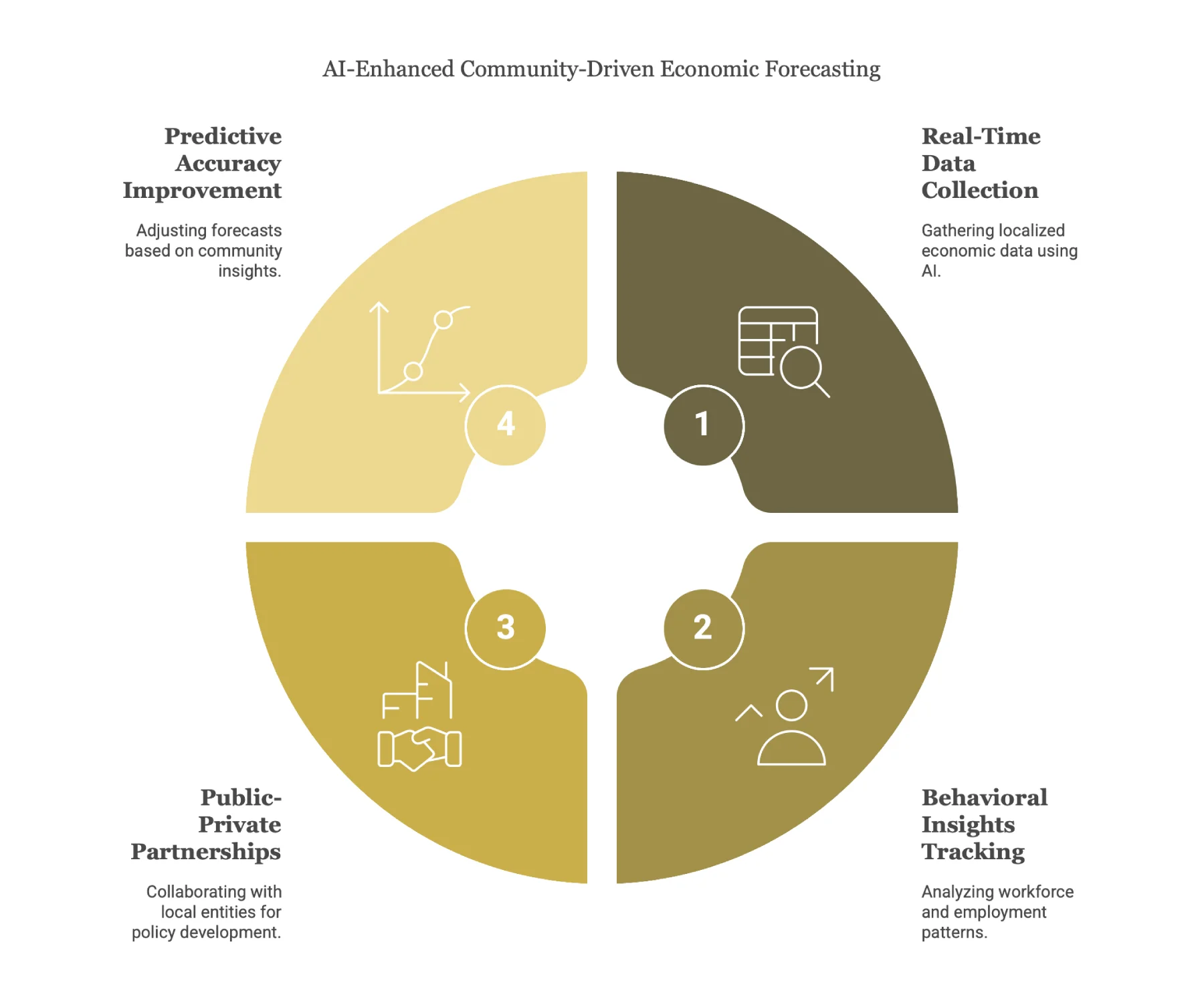How AI is Transforming Government Economic Planning
Artificial intelligence (AI) is revolutionizing economic planning for governments by providing advanced predictive capabilities, optimizing policy decisions, and enhancing public service delivery. By integrating AI-driven economic forecasting, machine learning-powered simulations, and community engagement insights, governments can create more adaptive, data-driven economic strategies. This article explores how AI is transforming government economic planning and how economic forecasting consultants can leverage community engagement to enhance predictive models.
Enhancing Economic Forecasting Accuracy
Traditional economic forecasting relies on historical data, econometric models, and periodic reporting, often resulting in time lags and reduced accuracy during periods of economic volatility. AI-driven forecasting enhances prediction accuracy by processing vast amounts of structured and unstructured data in real time, including high-frequency market indicators, sentiment analysis, and alternative data sources.
Recent studies have demonstrated that AI-based forecasting models can outperform traditional econometric models by incorporating real-time behavioral insights. For example, AI-driven nowcasting techniques can predict current economic conditions by analyzing retail foot traffic, job postings, and social media discussions before official statistics are released. This real-time intelligence allows policymakers to respond more proactively to economic fluctuations.
Moreover, AI tools such as natural language processing (NLP) enable automated analysis of policy statements, financial reports, and central bank communications. A recent analysis by the Bundesbank utilized AI to process over 50,000 sentences from European Central Bank (ECB) monetary policy statements, revealing insights into inflation risks and interest rate biases. Additionally, the Federal Reserve’s recent decision to maintain interest rates amid trade tensions and inflationary pressures has reinforced the role of AI-driven sentiment analysis in economic decision-making. AI’s ability to analyze financial market reactions and global supply chain disruptions allows governments to fine-tune policy responses to economic uncertainty.

In order to survive and thrive in today’s business world, organizations must be able to adapt quickly to changing conditions.
Optimizing Policy Design Through AI-Powered Simulations
One of AI’s most significant contributions to government economic planning is its ability to simulate the impacts of different policy decisions before they are implemented. AI-powered simulations and reinforcement learning models can predict how various fiscal and monetary policies will affect economic growth, employment, and income distribution.
For instance, the AI Economist framework applies reinforcement learning to optimize tax policies by balancing equality and productivity. This model enables governments to test various taxation structures, labor incentives, and social programs to identify strategies that maximize social welfare while maintaining economic efficiency. Similarly, multi-agent AI models can simulate macroeconomic changes, allowing policymakers to evaluate trade-offs in industrial policy, interest rate adjustments, and public spending allocations.
A recent study introduced the Multi-LLM-Agent-Based (MLAB) framework, which employs multiple large language models (LLMs) as economic agents to simulate the effects of economic policies on diverse population segments. By incorporating heterogeneous agent behavior into economic modeling, AI enables policymakers to design interventions that are more inclusive and tailored to different socioeconomic groups.
MOST POPULAR INSIGHTS
Enhancing Public Service Delivery and Economic Resilience
Beyond forecasting and policy simulation, AI is enhancing public service delivery by increasing efficiency, reducing costs, and ensuring more equitable resource allocation. In the UK, AI is being used to predict pension payouts, optimize government hiring processes, and analyze the inclusivity of job advertisements. AI-powered tools can assist in evaluating tax and welfare policy changes, helping governments understand their impact on different demographics before implementation.

Enhanced Economic Forecasting
Leveraging Community Engagement for Enhanced Economic Forecasting
Economic forecasting is often criticized for its reliance on macroeconomic indicators that fail to capture localized and behavioral insights. By integrating community engagement with AI-driven models, governments can develop more accurate and adaptive economic forecasts.
AI-powered sentiment analysis of local business forums, consumer surveys, and hiring trends provides early indicators of economic shifts that traditional models might overlook.
AI-driven analytics combined with community engagement can track workforce mobility patterns, identify barriers to employment, and enhance skills development programs.
Governments can collaborate with local businesses, trade associations, and nonprofits to co-develop economic policies that reflect real-world conditions.
Community-based insights, such as small business confidence surveys and localized inflation tracking, can help AI models adjust forecasts in response to real-time economic fluctuations.

Conclusion: The Future of AI in Government Economic Planning
AI is transforming government economic planning by enhancing forecasting accuracy, optimizing policy decisions, and improving public service delivery. By integrating AI with community engagement strategies, governments can create more inclusive, data-driven economic models that are more resilient to uncertainty and better suited to real-world challenges.
For economic forecasting consultants like Morant McLeod, leveraging AI in conjunction with real-time community insights offers a powerful advantage in predicting economic trends and designing adaptive policies. As AI continues to evolve, its role in economic planning will expand, enabling governments to navigate economic complexity with greater precision and foresight.
TAILORED SOLUTIONS
For more insights and tailored solutions, visit Morant McLeod Finance and Operations Practice and learn how we can help your organization achieve its financial and strategic goals.
Author: Morant McLeod Operations and Improvement Group, Morant McLeod Strategy and Innovation Group







